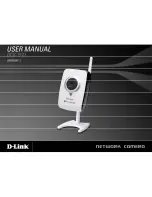
™
Page 26 of 66
3 Using the vLoc3 RTK-Pro
3.2 Active Locating:- Applying the Transmitter
Active locating uses a transmitter to apply a precise frequency to a pipe or cable, then uses a receiver turned to detect the
signal being radiated at that precise frequency. Active location frequencies can be applied by direct connection, signal clamp, or
induction (This is further explained in the following sections).
Unlike passive detecting, active locating has the benefit of the operator controlling the signals and can be more specific about
what line is detected. Passive signals are also not always present on a line, so using active signals ensures more lines are
detected.
Choosing the correct frequency will depend on the application, but as a general rule, select low frequencies as these tend to “bleed
off” less than higher frequencies. A good general-purpose frequency is 33kHz and is a good starting point if in doubt.
When using “induction” or the “signal clamp,” the frequencies available are limited to a set of frequencies optimized for the
equipment. The full range of frequencies is available in the “direct connection” mode.
For frequencies below 45 kHz, authorities such as the FCC allow higher power output to be used; for frequencies of 45 kHz and
above, power output for this type of equipment is restricted to 1 watt. Therefore more power is available when lower frequencies
are used.
To inject a signal requires the use of a transmitter. The signal can be injected or applied to the target line in a variety of ways.
3.2.1
Direct Connection
This method involves making an electrical connection to the cable or pipe.
WARNING
When connecting to a cable, only connect to the sheath of that cable. The direct connection leads are
not designed for connection to live cables.
WARNING
Do not touch metal parts of the connection clips when connecting to the line or when the transmitter
is on.
WARNING
Only authorized personnel should make connections to cables.
Summary of Contents for 4.04.000170
Page 1: ...vLoc3 RTK Pro User Handbook English Edition Version 1 1 P N 4 04 000170...
Page 2: ......
Page 8: ......
Page 76: ......
















































